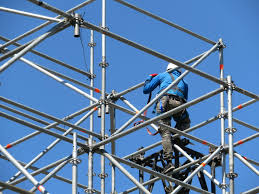Aug . 06, 2024 10:46 Back to list
Innovative Solutions for Formwork Systems in Factory-Made Suspended Concrete Slabs
Formwork for Suspended Concrete Slab Factory
Formwork plays a crucial role in the construction industry, especially in the construction of suspended concrete slabs. A suspended concrete slab is a structural component that not only provides support but also serves as a floor or ceiling in buildings. The proper use of formwork is essential in ensuring the integrity, safety, and aesthetic quality of these slabs.
Understanding Formwork
Formwork refers to the temporary or permanent molds into which concrete is poured. It provides the necessary shape and support for the concrete until it reaches sufficient strength to support itself. Formwork can be made from various materials including timber, steel, aluminum, or a combination of these. The choice of material often depends on factors such as the complexity of the design, the volume of concrete, and the duration the formwork will be in place.
Importance of Formwork in Suspended Concrete Slabs
For suspended slabs, the formwork must withstand significant loads from the wet concrete and any additional materials being added during construction. Properly designed formwork acts as a support system, ensuring that the concrete cures in the desired shape and dimensions. Any imperfections in the formwork can lead to defects in the finished slab, which can compromise both structural integrity and visual appeal.
Types of Formwork
There are several types of formwork systems commonly used in the construction of suspended concrete slabs
1. Plywood Formwork This is commonly used for its versatility and ease of handling. It can be adapted to various shapes and is suitable for both large and small projects.
formwork for suspended concrete slab factory

3. Aluminum Formwork Lightweight and easy to assemble, aluminum is beneficial in projects requiring rapid construction cycles.
4. Pre-fabricated Formwork Systems These systems come in pre-assembled sections and are designed for quick installation and removal, which can significantly cut down on labor costs and construction time.
Best Practices in Formwork Construction
Implementing best practices in formwork construction is vital to achieving high-quality suspended concrete slabs. This includes ensuring that all formwork is level and properly aligned. Regular inspections during assembly can help identify any potential issues before the concrete is poured.
Additionally, using the right supports, braces, and jacks is necessary to prevent deformation under load. The safety of construction workers is paramount, and necessary precautions should be in place to prevent accidents related to formwork failure.
Innovative Technologies in Formwork
In recent years, advancements in technology have led to the development of more sophisticated formwork systems. 3D modeling and design software allow for better planning and visualization of concrete pours, while new materials enhance strength and reduce weight. Moreover, automated systems can minimize human error and increase efficiency.
Conclusion
In summary, formwork for suspended concrete slabs is an indispensable aspect of construction that directly impacts both safety and quality. By understanding its importance, selecting the appropriate type, and adhering to best practices, construction professionals can ensure the successful execution of their projects. As technology continues to evolve, the methods and materials related to formwork will only improve, enhancing the efficiency and safety of construction processes worldwide.
-
Ringlock Scaffolding: Strong, Safe & Efficient Solutions
NewsAug.27,2025
-
OEM Column Formwork: Circular, Curved & Inclined Solutions
NewsAug.26,2025
-
Premium Scaffolding Jacks: Stable, Adjustable & Durable
NewsAug.25,2025
-
OEM Wall Formwork & Shuttering: Flexible & Curved Solutions
NewsAug.24,2025
-
Adjustable Heavy Duty Props for Slab Formwork | Strong & Reliable Support
NewsAug.23,2025
-
Adjustable Heavy Duty Props for Slab Formwork - Strong & Safe Support
NewsAug.22,2025